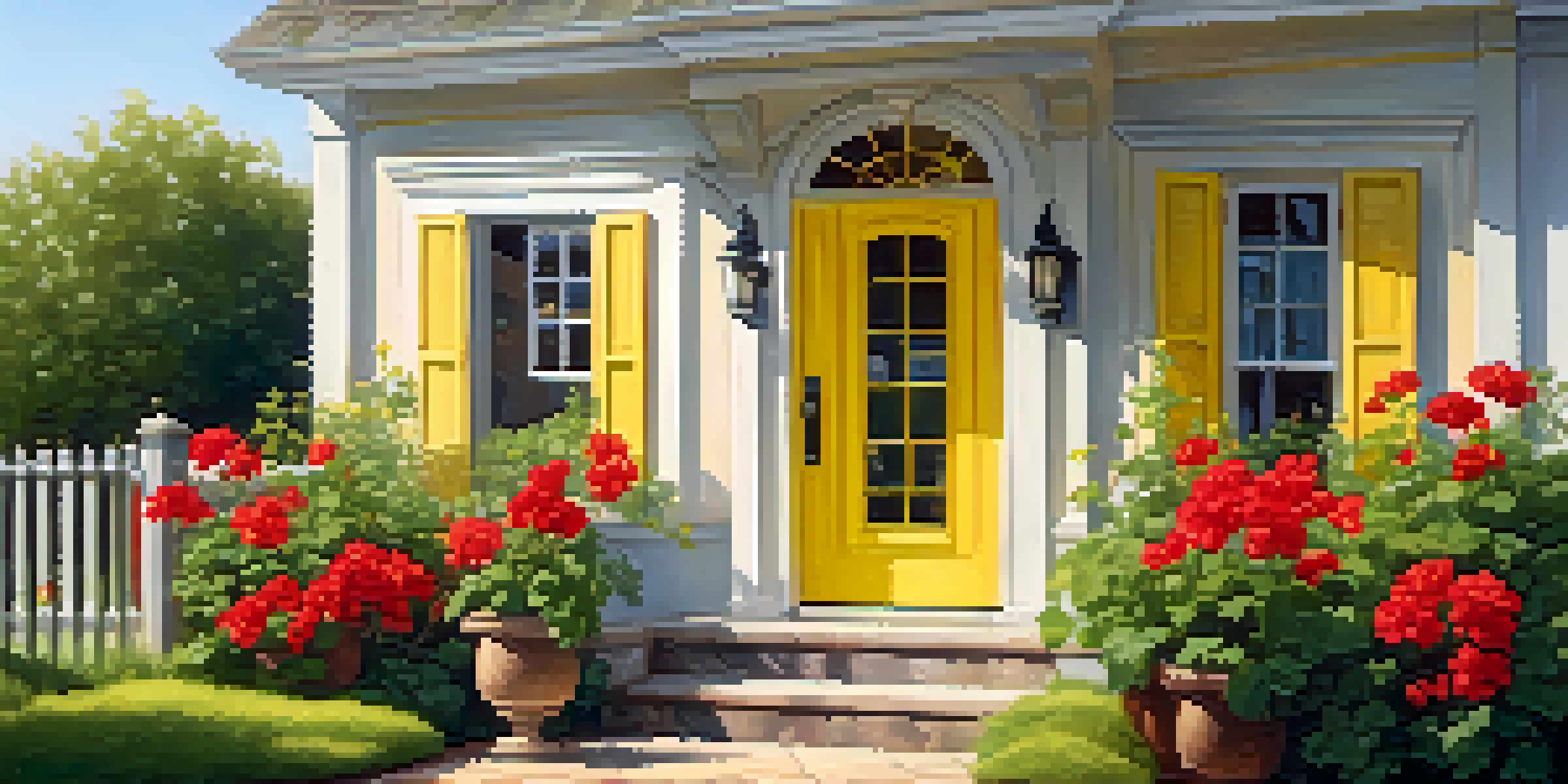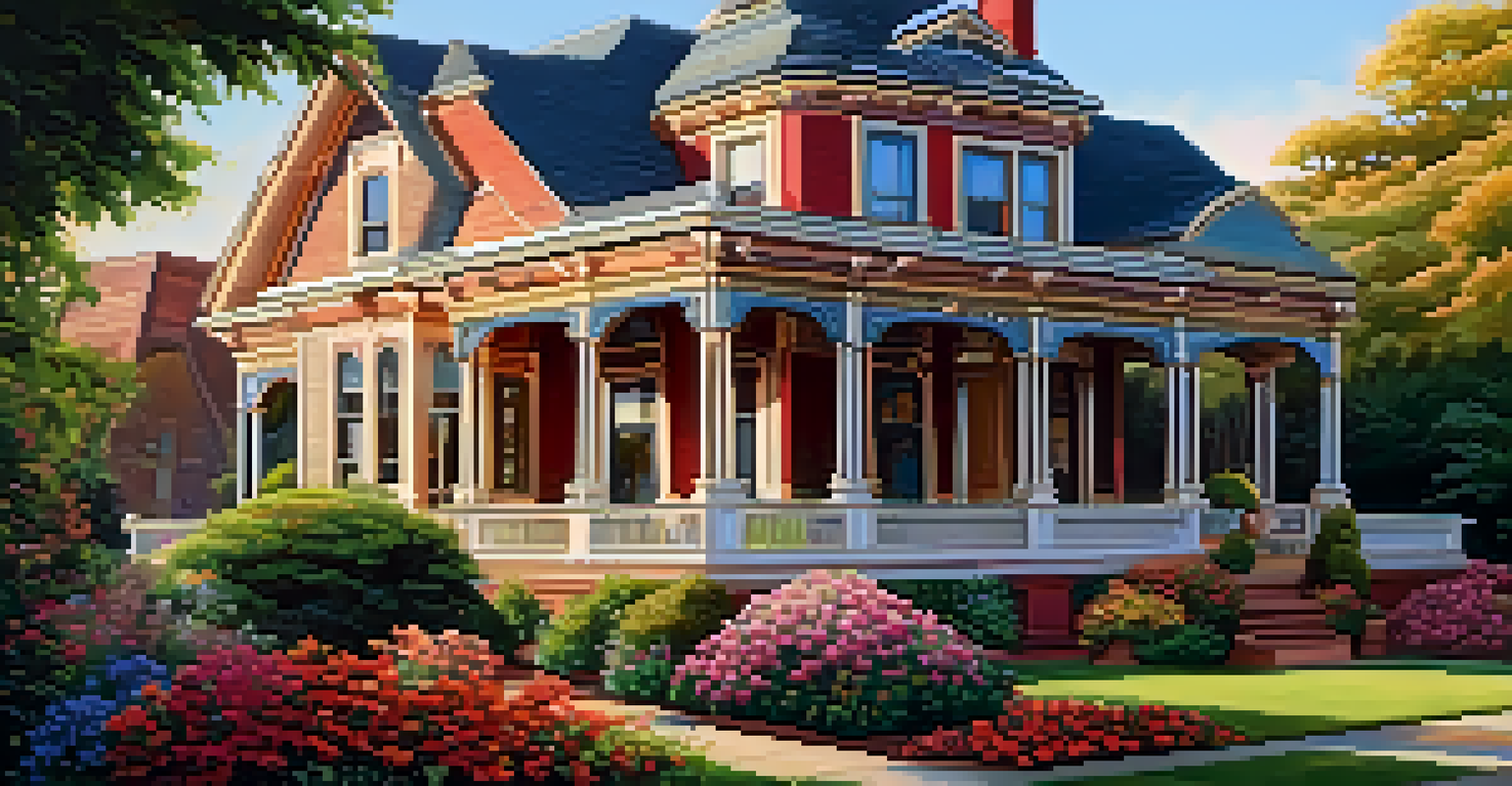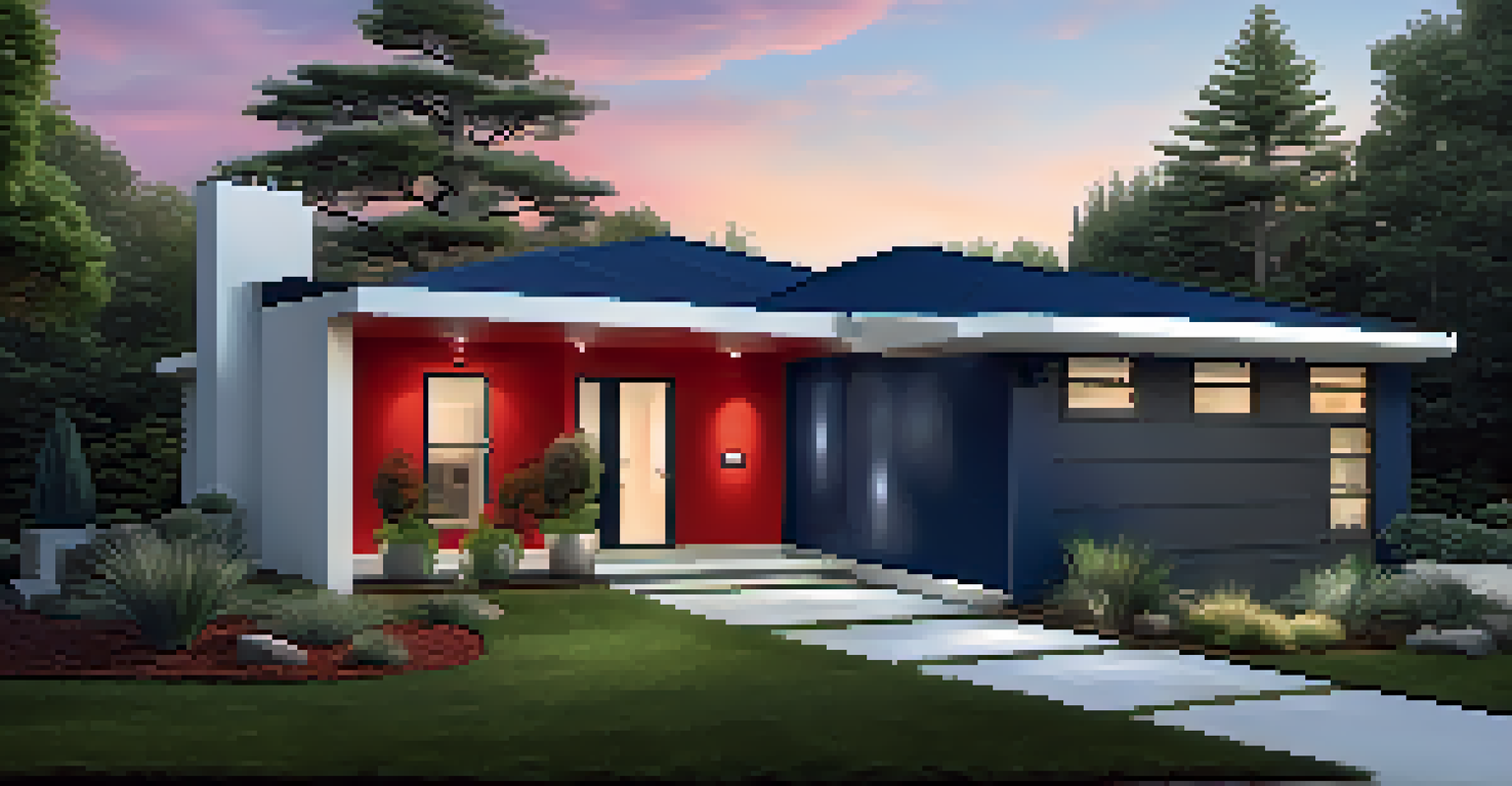Using Color Psychology to Improve Curb Appeal

Understanding Color Psychology in Home Design
Color psychology is the study of how colors affect perceptions and behaviors. In the context of home design, the colors you choose can evoke specific feelings and impressions in potential buyers or visitors. For example, warm colors like red and orange can create a sense of warmth and energy, while cooler colors like blue and green tend to promote calm and tranquility.
Colors are the smiles of nature.
When considering curb appeal, it's essential to think about the emotions you want to convey to those approaching your home. A well-chosen color palette can make your home feel inviting and attractive, setting the stage for a positive first impression. Understanding the basics of color psychology can empower you to make informed choices that enhance your home's exterior.
For instance, if you're aiming for a vibrant and cheerful atmosphere, incorporating yellow accents might be effective. On the other hand, if you prefer a more sophisticated look, shades of gray or deep blue can convey elegance. By harnessing color psychology, you can strategically enhance your home's curb appeal.
Choosing the Right Colors for Your Home's Exterior
Selecting the right colors for your home's exterior involves considering both aesthetics and functionality. Start by evaluating your home's architectural style and the surrounding environment. A traditional home might look stunning in classic colors like cream or muted pastels, while a modern house could shine in bold, contemporary hues.

It's also important to think about the neighborhood vibe. If your area features a lot of vibrant colors, you might want to join in with some more daring shades. However, if your neighborhood is more subdued, choosing softer, harmonious colors can help your home stand out without clashing.
Color Affects Home Perception
Choosing the right colors for your home can evoke specific emotions and create a positive first impression for visitors.
Moreover, don't forget to consider practical elements such as climate. In hotter climates, lighter colors can help keep your home cooler, while darker colors may absorb heat. Balancing these practicalities with your personal style will lead to a more cohesive and appealing exterior.
The Impact of Accent Colors on Curb Appeal
Accent colors can significantly influence your home's overall appeal. These are the colors you use in smaller areas, like doors, shutters, or trim, which can draw attention and create visual interest. Using a contrasting accent color can make these features pop, enhancing the overall look of your home.
The best color in the whole world is the one that looks good on you.
For instance, pairing a soft gray with a bold red door creates a striking focal point that invites curiosity. This approach not only beautifies your home but also communicates personality and style. Accent colors can also reflect your personal taste, making your home feel uniquely yours.
When selecting accent colors, consider how they complement the primary color scheme. It's beneficial to use a color wheel to find harmonious combinations, ensuring that your choices enhance rather than clash with the main colors.
Using Color to Create a Welcoming Entrance
Your front entrance is the first thing visitors see, so using color strategically can make it feel more inviting. Warm colors like soft yellows or peach can create an atmosphere of hospitality. You might consider painting your front door in one of these shades to create an approachable vibe.
Additionally, adding potted plants or flowers in complementary colors can enhance this welcoming feeling. Imagine a bright yellow door paired with vibrant red geraniums—such combinations can instantly lift the mood and attract attention. This thoughtful approach can transform a standard entryway into a charming gateway.
Accent Colors Enhance Appeal
Using contrasting accent colors can draw attention to key features of your home, making it visually interesting and unique.
Don't overlook the impact of lighting either. Well-placed outdoor lights can enhance the colors of your entrance, especially during twilight hours. By combining color with strategic lighting, you can create an entrance that beckons visitors with open arms.
Creating Cohesion with Surrounding Landscaping
Your home's colors should harmonize with the landscaping to create a well-coordinated look. If your garden features vibrant flowers and lush greenery, selecting colors that complement these elements can enhance curb appeal. For instance, a home painted in soft earth tones can beautifully reflect the natural hues of plants and flowers around it.
Also, consider the seasonal changes in your landscaping. Choosing a color scheme that looks good year-round can prevent your home from feeling out of place in different seasons. For example, a neutral base with seasonal accents can allow for flexibility without compromising the overall aesthetic.
Incorporating natural materials, like wooden accents, can also tie your home to its environment. When your home and landscaping work together, they create a unified and inviting atmosphere that enhances your overall curb appeal.
Color Choices for Different Architectural Styles
Different architectural styles lend themselves to specific color palettes. For instance, Victorian homes often shine in rich, bold colors, while Craftsman-style houses look stunning in earthy tones like browns and greens. Understanding your home's architectural style can guide you in selecting colors that enhance its character and charm.
Moreover, traditional styles, such as colonial or farmhouse, typically benefit from classic colors like white, beige, or muted pastels. These choices not only honor the style's heritage but also ensure the home blends well with its surroundings.
Cohesion with Landscaping Matters
Harmonizing your home's colors with surrounding landscaping creates a unified and inviting atmosphere that boosts curb appeal.
On the other hand, contemporary designs can embrace bolder colors, allowing for more creativity and personal expression. By aligning your color choices with your home's architecture, you can amplify its beauty and curb appeal.
Maintaining Your Color Choices for Long-Lasting Appeal
Once you've chosen your colors, maintaining their vibrancy is crucial for lasting curb appeal. Regular cleaning and upkeep will help prevent fading and discoloration from the elements. Simple tasks like washing your exterior surfaces or repainting worn areas can keep your home looking fresh.
Consider quality paint and materials, as these can withstand weather changes better than cheaper alternatives. Investing in quality materials might require a bit more upfront cost, but it pays off in the long run by reducing maintenance and enhancing durability.

Also, keep in mind that trends come and go. While it's tempting to follow the latest color fads, sticking to a timeless palette can ensure your home remains appealing for years. By prioritizing maintenance and timelessness, you can enjoy your beautiful curb appeal long into the future.